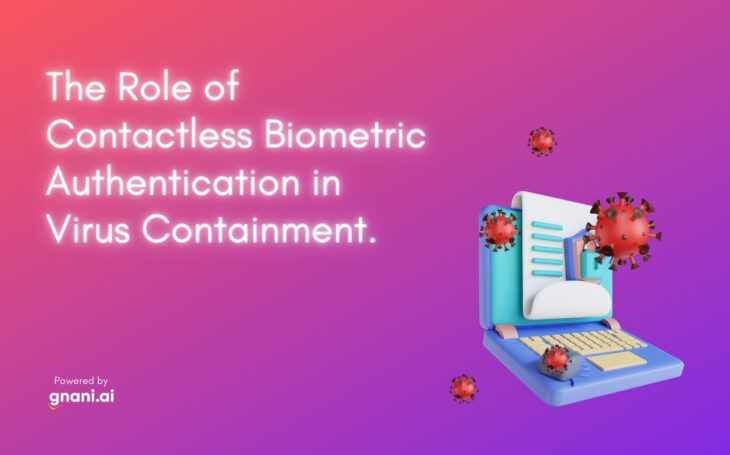
The outbreak of the COVID-19 pandemic has resulted in a dramatic increase in the use of biometric authentication systems for both personal and commercial purposes. This is due to the fact that biometric authentication systems offer a much higher level of security than traditional methods such as passwords and PIN codes. Furthermore, biometric authentication systems can be used to verify the identity of an individual without the need for physical contact, which is essential in preventing the spread of the virus.
There are a number of different types of contactless biometric authentication systems that can be used, including fingerprint scanners, iris scanners, voice recognition and facial recognition technology. However, it is important to note that not all biometric authentication systems are created equal. In order to ensure that your contactless biometric authentication system is effective in preventing the spread of the virus, it is important to choose a system that has been specifically designed for use in virulent environments.
Role of contactless biometric authentication in virus containment
There are a number of different factors that need to be considered when choosing a contactless biometric authentication system for use in virulent environments. Firstly, the system must be able to accurately identify individuals without the need for physical contact. Secondly, the system must be able to operate in a wide range of environmental conditions, including both hot and cold climates. Finally, the system must be easy to use and deploy, so that it can be used by a wide variety of people with different levels of technical expertise.
When it comes to accuracy, fingerprint scanners are generally considered to be the most accurate type of contactless biometric authentication system. This is because fingerprints are unique to each individual and are very difficult to replicate. Iris scanners are also extremely accurate, but they can be more expensive to deploy than fingerprint scanners. Voice recognition systems are less accurate than both fingerprint scanners and iris scanners, but they are significantly cheaper to deploy.
Facial recognition technology is the least accurate type of contactless biometric authentication system, but it has the advantage of being able to operate in a wide range of environmental conditions. Facial recognition systems can be used in both hot and cold climates, and they are also relatively easy to use and deploy. However, it should be noted that facial recognition systems are not 100% accurate and there is a chance that false positives could occur.
It is important to choose a contactless biometric authentication system that is specifically designed for use in virulent environments. The system should be able to accurately identify individuals without the need for physical contact, and it should be able to operate in a wide range of environmental conditions. Furthermore, the system should be easy to use and deploy, so that it can be used by a wide variety of people with different levels of technical expertise.
Benefits of using contactless biometric authentication for virus containment.
There are a number of benefits that can be gained by using contactless biometric authentication for virus containment.
- Firstly, the system can be used to accurately identify individuals without the need for physical contact. This is extremely important in preventing the spread of the virus, as it means that individuals who are infected with the virus will not be able to pass on the infection to others through physical contact.
- Secondly, the system can be used in a wide range of environmental conditions, including both hot and cold climates. This is important as it means that the system can be used in a variety of different settings, such as offices, schools and hospitals.
- Finally, the system is easy to use and deploy, so it can be used by a wide variety of people with different levels of technical expertise. This is important as it means that the system can be used by a wide range of people, including those who are not familiar with using biometric authentication systems.
Overall, the use of contactless biometric authentication for virus containment can provide a number of benefits. The system can be used to accurately identify individuals without the need for physical contact, and it can be used in a wide range of environmental conditions. Furthermore, the system is easy to use and deploy, so it can be used by a wide variety of people with different levels of technical expertise.
Challenges with implementing contactless biometric authentication for virus containment.
There are a number of challenges that need to be considered when implementing contactless biometric authentication for virus containment.
- The system needs to be accurate in order to be effective. This means that it needs to be able to accurately identify individuals without the need for physical contact.
- The system needs to be able to operate in a wide range of environmental conditions, including both hot and cold climates.
- The system needs to be easy to use and deploy so that it can be used by a wide variety of people with different levels of technical expertise.
Overall, there are a number of challenges that need to be considered when implementing contactless biometric authentication for virus containment. However, if these challenges can be overcome, then the system can provide a number of benefits.
How to overcome these challenges
There are a number of ways in which the challenges associated with implementing contactless biometric authentication for virus containment can be overcome.
- Firstly, the accuracy of the system can be improved by using multiple biometric modalities, such as fingerprint recognition and iris recognition. This will help to reduce the chances of false positives occurring.
- Secondly, the system can be designed to operate in a wide range of environmental conditions. This will ensure that the system can be used in a variety of different settings, such as offices, schools and hospitals.
- Finally, the system can be made easy to use and deploy by providing clear instructions and training materials. This will ensure that the system can be used by a wide range of people, including those who are not familiar with using biometric authentication systems.
Overall, there are a number of ways in which the challenges associated with implementing contactless biometric authentication for virus containment can be overcome. By taking these steps, it will be possible to improve the accuracy of the system and make it easier to use and deploy. This will help to ensure that the system can be used effectively to prevent the spread of the virus.
Conclusion
Contactless biometric authentication can play an important role in virus containment. The system can be used to accurately identify individuals without the need for physical contact, and it can be used in a wide range of environmental conditions. Furthermore, the system is easy to use and deploy, so that it can be used by a wide variety of people with different levels of technical expertise. However, there are a number of challenges that need to be considered when implementing the system. These challenges can be overcome by using multiple biometric modalities, designing the system to operate in a wide range of environmental conditions and making the system easy to use and deploy. By taking these steps, it will be possible to improve the accuracy of the system and make it easier to use and deploy. This will help to ensure that the system can be used effectively to prevent the spread of the virus.
What do you think is the best way to avoid contamination during the authentication process? Let me know in the comments!




